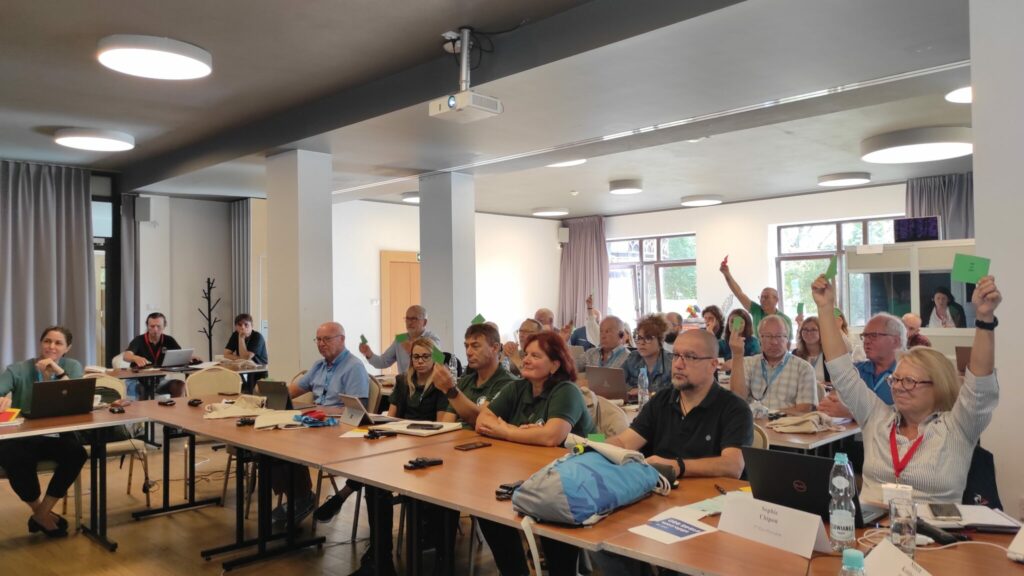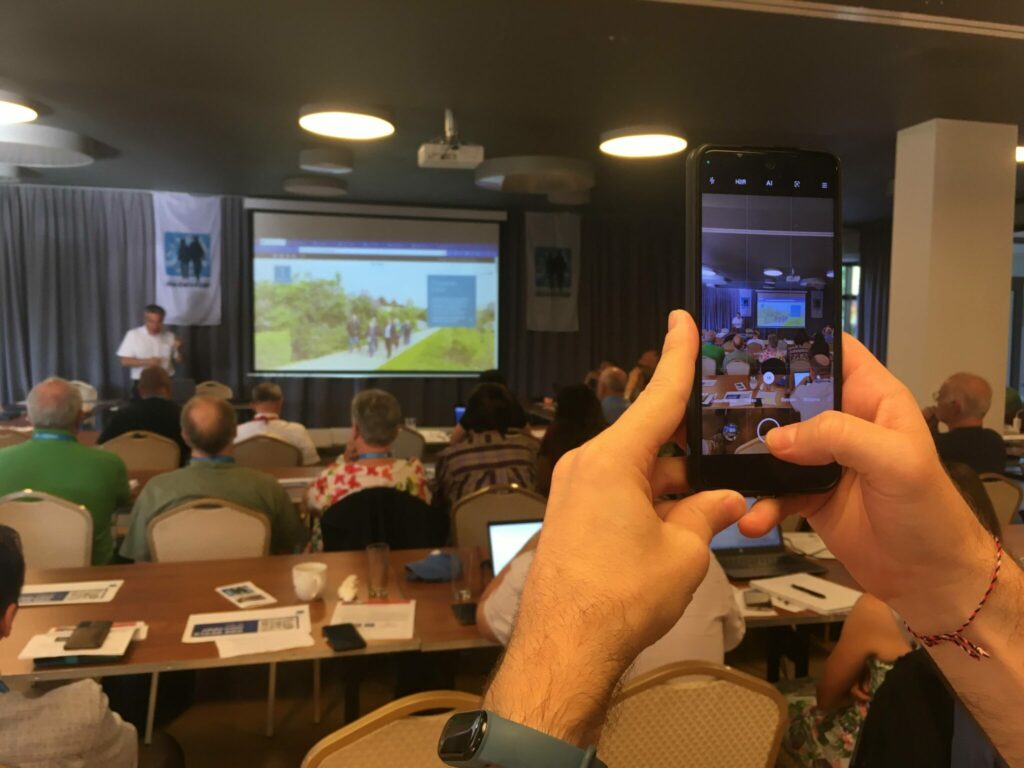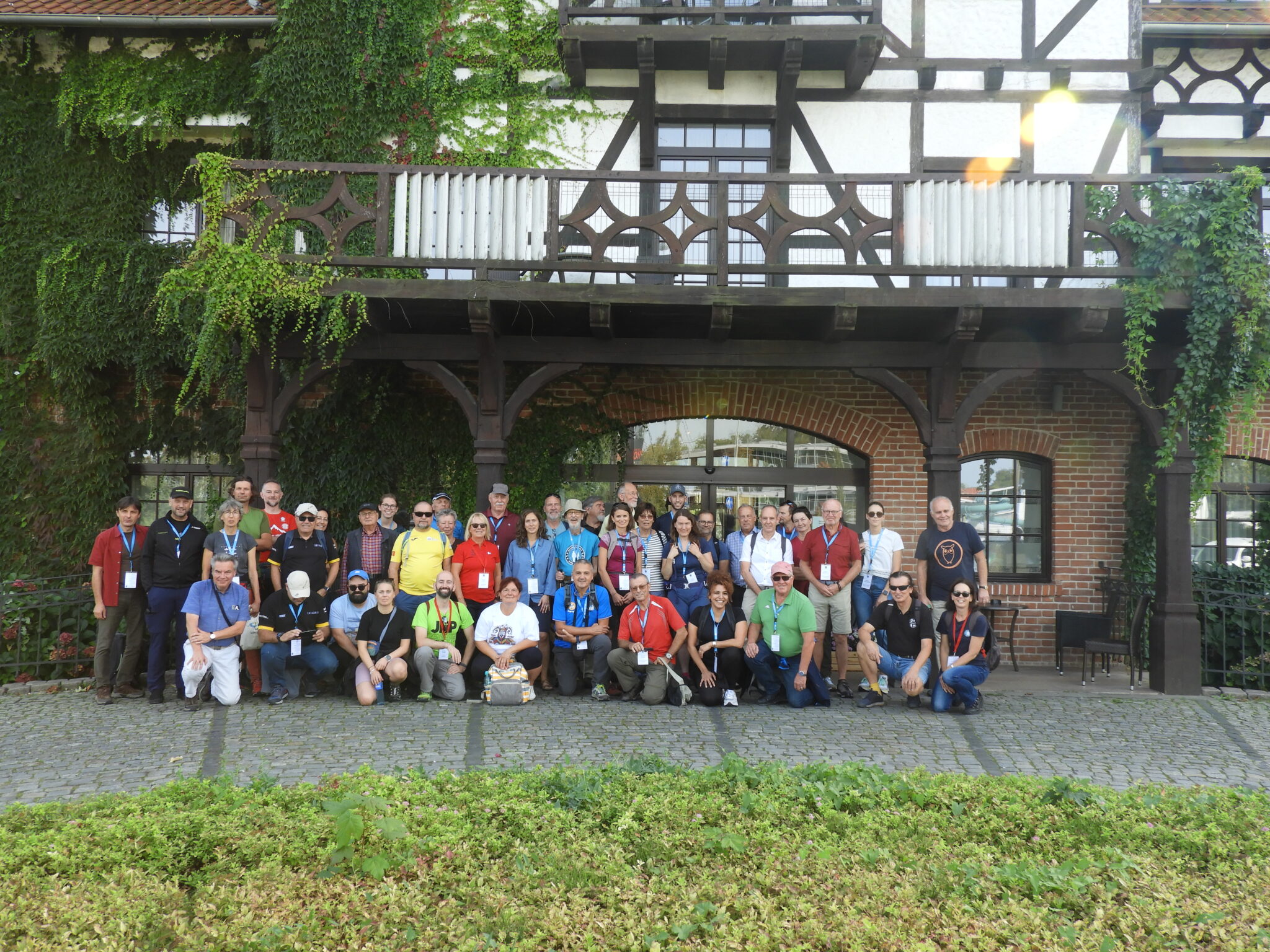There are many benefits of being member of ERA. Find them below:
Benefits
- Networking and cross-border cooperation: ERA facilitates networking and cross-border cooperation among its member organizations. This allows organizations to share their expertise, best practices, and resources, fostering collaboration and mutual support.
- Expertise and knowledge sharing: ERA member organizations have access to the collective expertise and knowledge of over 60 walking organizations from more than 30 European countries. They can learn from each other’s experiences and gain valuable insights into organizing and creating optimal conditions for walking activities.
- Representation at international organizations: ERA represents the interests of its member associations in international organizations such as the European Union and the Council of Europe. Through this representation, member organizations have a voice in shaping policies and decisions that impact walking and hiking activities across Europe.
- Access to funding and grants: ERA develops and implements a financial strategy, which may include seeking funding opportunities and grants. Member organizations can benefit from these financial initiatives, supporting their activities, projects, and infrastructure development.
- Marketing and communication support: ERA develops and implements a marketing and communication strategy to contribute to its business model. Member organizations can benefit from this strategy by gaining exposure and visibility through ERA’s promotional efforts, which can help attract new members, participants, and sponsors.
- Events and activities: ERA organizes various events and activities that member organizations can participate in. These include the yearly conference with workshops and the general assembly, webinars on various subjects, the European Walking Day, and the Eurorando (held every 5 years). Participation in these events provides networking opportunities and the chance to exchange ideas with peers.
- Leading Quality Trails certification: ERA certifies the best hiking routes and trails as Leading Quality Trails – Best of Europe. Member organizations can work towards achieving this certification, which enhances the reputation and quality of their trails, attracting more walkers and tourists.
- E-paths promotion: ERA owns and promotes the 12 E-paths, which are long-distance paths spanning a total length of 75,000 km across Europe. Member organizations can benefit from the promotion of these paths, as they attract hikers and contribute to the development of sustainable tourism in their respective regions.
- Walk Leader program: ERA runs a Walk Leader program, which provides training and certification for individuals interested in leading walking groups. Member organizations can participate in this program to enhance their capacity to organize and conduct safe and enjoyable walking activities.
- Aqua Walking program: ERA also runs an Aqua Walking program, which focuses on walking activities in aquatic environments. Member organizations can participate in this program to expand their offerings and cater to a broader range of interests and preferences among their members.

Overall, being a member of ERA provides walking organizations with opportunities for collaboration, knowledge sharing, representation, and support, ultimately benefiting their own activities, members, and the walking community as a whole.
In addition to the benefits mentioned above, ERA serves as a forum for creating relations and relationships among its member organizations. This aspect plays a vital role in fostering a sense of community and collaboration within the walking community. Here are some ways in which ERA facilitates and highlights this aspect:
- Networking opportunities: ERA provides numerous networking opportunities for member organizations. The yearly conferences, workshops, and webinars organized by ERA bring together representatives from member organizations, allowing them to connect, share experiences, and build relationships. These events create a platform for networking and establishing fruitful collaborations among organizations from different European countries.
- Collaboration and knowledge sharing: Through ERA, member organizations have the chance to collaborate and share their knowledge and expertise. By participating in ERA’s events and activities, organizations can learn from one another, exchange ideas, and explore possibilities for joint initiatives. This collaboration strengthens the relationships between member organizations and encourages a supportive and cooperative environment.
- International exchange: ERA comprises walking organizations from over 30 European countries. This diversity provides an excellent opportunity for member organizations to engage in international exchanges. By interacting with organizations from different countries, members can gain insights into different walking cultures, practices, and approaches. This exposure helps broaden their perspectives and enrich their own organizational activities.
- Sense of community: Being part of ERA creates a sense of belonging and community among member organizations. They are part of a larger collective dedicated to promoting walking, protecting nature, and fostering mutual understanding. This shared purpose and connection contribute to a strong bond and a sense of solidarity among members.
- Advocacy and representation: ERA represents the interests of its member organizations in international organizations such as the European Union and the Council of Europe. This collective representation gives member organizations a unified voice and a platform to advocate for their concerns and priorities at a broader level. It reinforces the relationships between member organizations by working together towards common goals and shared interests.
- Relationship building beyond borders: ERA’s mission emphasizes cross-border cooperation and respecting the values and expertise of member organizations. By actively promoting cross-border initiatives and fostering collaboration, ERA helps build relationships that transcend national boundaries. This aspect encourages member organizations to forge connections with organizations from different countries and work together on international projects, strengthening their ties and promoting intercultural understanding.

In summary, ERA’s role as a forum for creating relations and relationships among its member organizations is a crucial aspect of the benefits it offers.
By providing networking opportunities, facilitating collaboration and knowledge sharing, fostering a sense of community, and encouraging international exchange, ERA enhances the bonds between member organizations and promotes a supportive and interconnected walking community across Europe.
Organisations can become members of ERA.
There are different categories of memberships:
- Full members
- Associate members
- Affiliated members
- Supporting members
- Honorary members and presidents
Extract of the ERA Constitution:
- Full members may be legal entities working on a voluntary base or are non-profiting. They have their seat in the territory of the geographical Europe and serve the purposes of the Constitution. Founding members have a right of continuance.
- Associate members may be legal entities with an economic profit that have their seat in the territory of the geographical Europe, and serve the purposes of the Constitution. These members have voting rights only in the determination of membership fees.
- Affiliate members can be legal entities that accept the aims laid down in the Constitution and are based outside Europe. These members have voting rights only in the determination of membership fees.
- All legal and natural persons who want to support the goals of ERA can become supporting members. These members have no voting rights. The minimum membership fee is approved by the General Meeting.
- Natural persons who have rendered outstanding services to the concerns of the ERA may become honorary members.
- Presidents and vice-presidents of the association, who have rendered outstanding services to the association, can become honorary presidents.
- Membership within the meaning of paragraphs 1-3 requires a written application. Before admitting a member, the member club or clubs of the same country must be heard. The Board decides on the application after examination. In case of any conflict, the General Meeting will decide on the application.
- Supporting members are accepted after a written application by the Board.
- Honorary members and presidents are elected by the General Meeting upon proposal of the Board. Members can suggest suitable persons to the board.
If you want to become a member of ERA, please contact ERA Secretariat.


 Walk for unity & wellness!
Walk for unity & wellness! 


